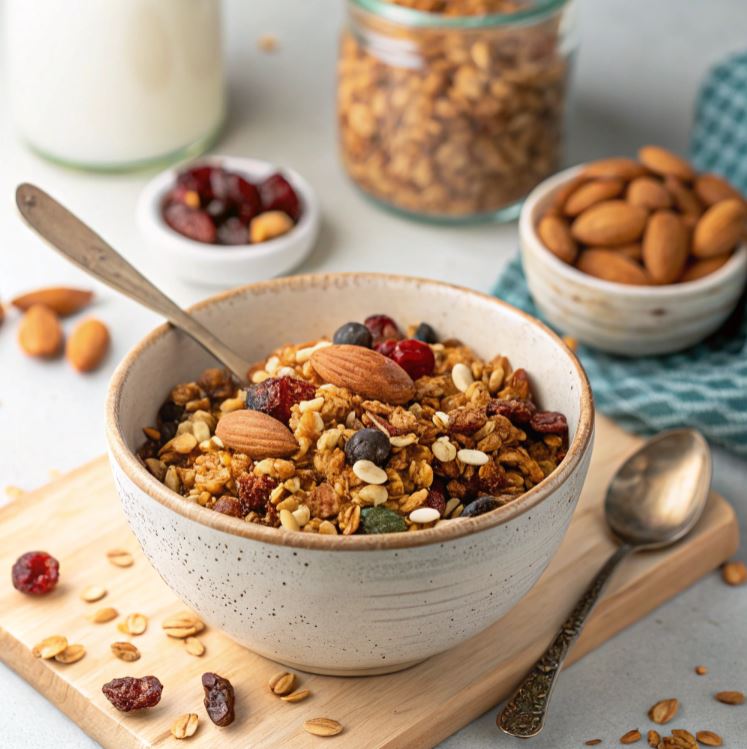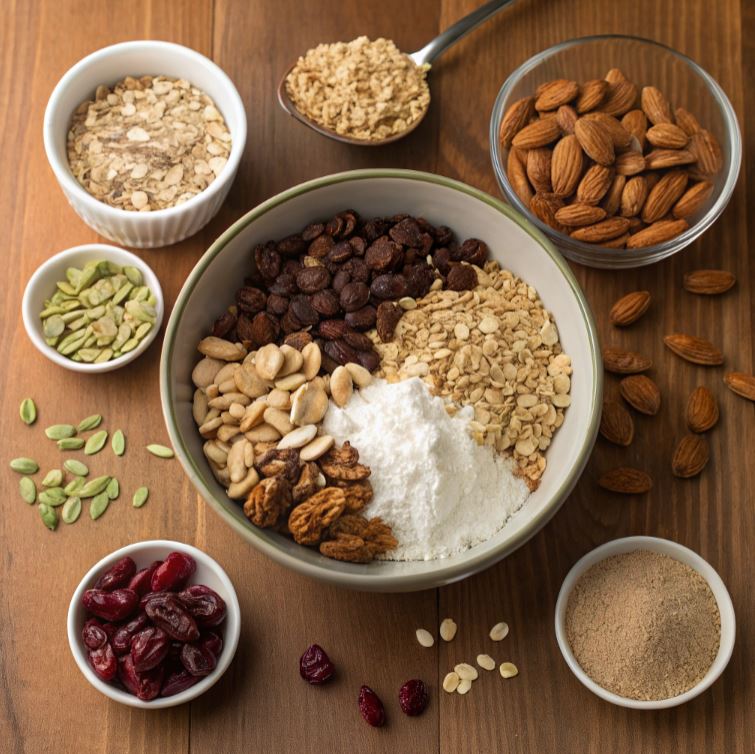Protein granola has become a staple for individuals seeking a balanced, protein-packed diet. This nutrient-dense snack provides essential macronutrients, making it a favorite among athletes, fitness enthusiasts, and those maintaining a healthy lifestyle. With a perfect combination of complex carbohydrates, healthy fats, and protein, it offers sustained energy and satiety.

Whether consumed as a breakfast cereal, a yogurt topping, or a standalone snack, protein granola stands out for its versatility and convenience. Unlike traditional granola, which tends to be high in sugar, this variation focuses on high-quality protein sources such as nuts, seeds, and protein powder.
Consumers today demand functional foods that align with their dietary goals. This has propelled protein granola into mainstream markets, with brands innovating flavors and formulations to cater to different needs. Understanding its history, variations, and nutritional impact can help consumers make informed choices when adding it to their diet.
History and Origins of Protein Granola
The origins of granola date back to the late 19th century when health advocates began promoting whole-grain cereals as nutritious breakfast options. Dr. James Caleb Jackson first introduced a wheat-based product called “granula” in 1863, later refined by John Harvey Kellogg into the granola we recognize today.
Over time, granola gained popularity among outdoor enthusiasts and health-conscious individuals. The introduction of protein granola was a natural evolution, aligning with the increasing emphasis on protein-rich diets. As fitness trends grew, so did the demand for snacks that provided both energy and muscle-supporting nutrients.
By incorporating protein sources like whey, plant-based powders, and nuts, protein granola emerged as a functional food suitable for various dietary preferences. Today, it is found in supermarkets, specialty stores, and homemade recipes, making it accessible to consumers worldwide.
Protein Granola All Over the World
While granola originated in the United States, its variations have spread globally, each region adding unique ingredients based on local flavors and dietary traditions.
- United States & Canada: Often enriched with whey or pea protein, along with nuts and dried fruits.
- Europe: Includes variations with dark chocolate, seeds, and yogurt-coated ingredients.
- Asia: Features local superfoods like matcha, black sesame, and goji berries.
- Middle East: Commonly incorporates dates, pistachios, and tahini for natural sweetness and richness.
- South America: Uses quinoa, chia seeds, and coconut for added texture and nutrients.
This worldwide adaptation of protein granola showcases its versatility. While some regions prefer crunchy clusters, others opt for loose-textured mixes. The ability to customize ingredients based on dietary needs makes protein granola a globally cherished product.
Detailed Ingredients for Protein Granola
Creating homemade protein granola allows control over quality and nutritional content. The key ingredients include:

Protein Sources:
- Whey protein powder
- Pea or hemp protein (for plant-based options)
- Nuts (almonds, cashews, walnuts)
- Seeds (pumpkin, flax, chia)
Carbohydrates:
- Rolled oats (a rich source of fiber)
- Quinoa flakes
- Dried fruits (raisins, dates, cranberries)
Healthy Fats:
- Coconut oil
- Nut butters (almond, peanut, cashew)
Natural Sweeteners:
- Honey
- Maple syrup
- Coconut sugar
Flavor Enhancers:
- Cinnamon
- Vanilla extract
- Dark chocolate chunks
By carefully selecting these ingredients, individuals can tailor protein granola to meet their nutritional goals while ensuring delicious flavors.
Step-by-Step Instructions
- Preheat the oven to 325°F (163°C) and line a baking sheet with parchment paper.
- Mix the dry ingredients, including oats, nuts, seeds, and protein powder, in a large bowl.
- Combine wet ingredients, such as coconut oil, honey, and vanilla extract, in a separate bowl. Warm slightly for easier mixing.
- Blend the mixtures by pouring the wet ingredients over the dry ingredients and stirring until evenly coated.
- Spread the mixture onto the baking sheet, pressing slightly for clustered granola or leaving loose for a crumbly texture.
- Bake for 20-25 minutes, stirring halfway through to ensure even cooking.
- Cool completely before adding any heat-sensitive mix-ins like dried fruit or chocolate.
- Store in an airtight container for freshness, keeping at room temperature for up to two weeks.
By following these steps, anyone can create homemade protein granola that matches their taste and dietary preferences.
Tips for Perfect Protein Granola
To achieve the best texture and flavor, consider the following tips:
- Use high-quality protein powder that complements the granola’s flavor rather than overpowering it.
- Ensure even coating of wet ingredients to avoid dry or burnt clusters.
- Do not overbake; granola continues to crisp as it cools.
- Stir occasionally while baking for uniform crunch.
- Customize flavors by adding spices, citrus zest, or cocoa powder.
Implementing these strategies helps achieve perfectly crunchy, nutrient-dense protein granola every time.
Health Benefits of Protein Granola
Consuming protein granola provides numerous health advantages, including:
- Sustained energy: Complex carbohydrates offer long-lasting fuel.
- Muscle maintenance: High protein content supports muscle repair and growth.
- Digestive health: Fiber from oats and seeds promotes gut health.
- Heart health: Nuts and seeds provide essential healthy fats.
- Blood sugar stability: Balanced macronutrients prevent energy crashes.
For those seeking a nutritious alternative to sugary cereals or snacks, protein granola is an excellent choice.
Diet Information
Different dietary needs require thoughtful ingredient choices. Here’s how protein granola fits into various diets:
- Vegan: Replace honey with maple syrup and use plant-based protein.
- Keto: Reduce oats, increase nuts, and use a low-carb sweetener.
- Gluten-Free: Use certified gluten-free oats.
- Paleo: Replace oats with coconut flakes and seeds.
Customizing protein granola based on dietary preferences ensures accessibility for everyone, making it a nutritious addition to diverse meal plans.
